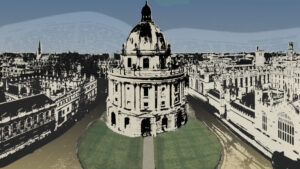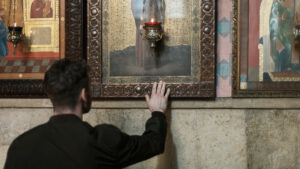Spend much time in Protestant circles and you will eventually hear of the Authorized Bible or the King James Bible. People who should know better have invented all manor of theories about the purity of the KJV, its reliance on the Textus Receptus, and the corruption of modern translations.
But the KJV was not the first English translation authorized by a king. The Great Bible (1539) was authorized by Henry VIII and was supervised by leading Protestant luminaries such as Miles Coverdale. It also rested its translation in large part on those books translated by William Tyndale. Its legacy was to shape future English bibles, including the KJV itself. Also its legacy will be largely forgotten due to the quirky way Henry VIII viewed the Reformation, as well as the enormous success of the KJV a century later.
Henry VIII and the Reformation
Henry VIII is one of the oddest characters in the story of the Reformation. A man of conservative instincts when Luther’s reformation began, he nevertheless overthrew papal influence in England and built a church of his own. This puts Henry in the awkward position as both persecutor and supporter of the English Protestant church—the king who had Tyndale killed and later himself hired Protestants to translate the Bible into English. He’s a man of enormous contradictions, which is why the early Reformation in England appears hesitant and piecemeal.
Still Henry did quarrel with the pope over his annulment to Catherine of Aragorn and so launched England in a Protestant direction (try as he might to stop it from becoming fully Protestant). Henry at least liked certain types of Protestants who were both opposed to the pope and yet still supportive of Henry VIII’s claims to be head of the church in England. These men included Thomas Cranmer, Thomas Cromwell, and Miles Coverdale, each instrumental in the approval of the Great Bible.
Reason for the Great Bible
Once Henry had ruptured the relationship between England and the papacy he was in need of supporters within the church. He needed leaders who would not question his authority, and he was willing, in part, to give them leeway on Protestant issues if they were loyal to the crown.
For Protestants in England, this was not a problem. Most early Protestants, including Luther, were in league with political rulers in order to shield the Reformation from oppression. Luther had written forcefully that Protestants do not rebel against the political state. Protestants in England, then, were on solid footing at first to be vocal advocates of Henry VIII’s regime.
What both Henry and Protestants both needed, though, was something to galvanize their relationship. If one were to discuss theology proper with Henry, he would often reach a stalemate—again because Henry was so quirky. He liked seven sacraments but not the cult of saints in Catholic practice. He wanted celibate priests but destroyed the fabric of English monasticism almost on his own. He did not like the Lutheran understanding of justification, yet he had no Catholic magisterium to hold up his understanding of merit and penance.
What both Henry and Protestants agreed on at least was that the papacy needed to be removed and that the Bible supported their reformation. The option to release an English translation of the Bible appears, then, to have been a natural idea to both sides.
The Great Bible (1539)
The book that was produced would be known as The Great Bible. It was created principally by Miles Coverdale, who used almost the entirety of the Tyndale New Testament and the books of the Old Testament he had translated before his death. Coverdale filled in the rest by translating from the Latin or German translations into English. The incorporation of the Tyndale Bible is perhaps its most incredible feature, as Tyndale was killed in part for his rogue translation, and now it was being foisted on the English people by the will of Henry VIII!
The Great Bible was printed up at great cost, and it was decreed that a copy should be placed in every church in England. This became officially the Bible of the English people for the remainder of Henry VIII’s life.
Henry VIII and the Great Bible
One of the curious features of The Great Bible—a feature that is a microcosm of the English Reformation itself—is the frontispiece just as you open the book. At the center page at the top we see two images of Henry VIII: one of him praying to Christ (top right), the other enthroned and handing the Word in each hand to Cranmer and Cromwell—both representing the church and the state.
One step down the image, we see Cranmer and Cromwell, leading their constituencies, handing the Bible to priests and civil rulers. Here is the “trickle down” result they wanted from The Great Bible: it would flourish in all sectors of society. The priests would be well-educated in the Scriptures, and the civil rulers would know their responsibilities.
One level down and the scene becomes a bit comical as well as a poignant reminder of what Henry VIII really wanted. Here we see all manor of people from society listening to a sermon, from a woman with her children even to criminals in jail. They hear the preached Word and, fittingly for Henry, end up saying “Vivat Rex!” (“Long live the King!”)

































